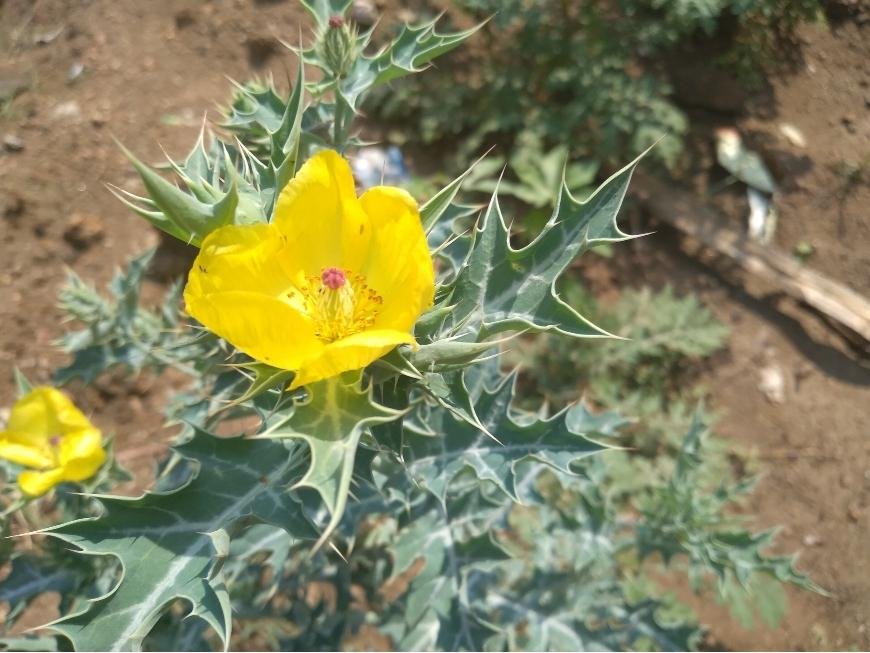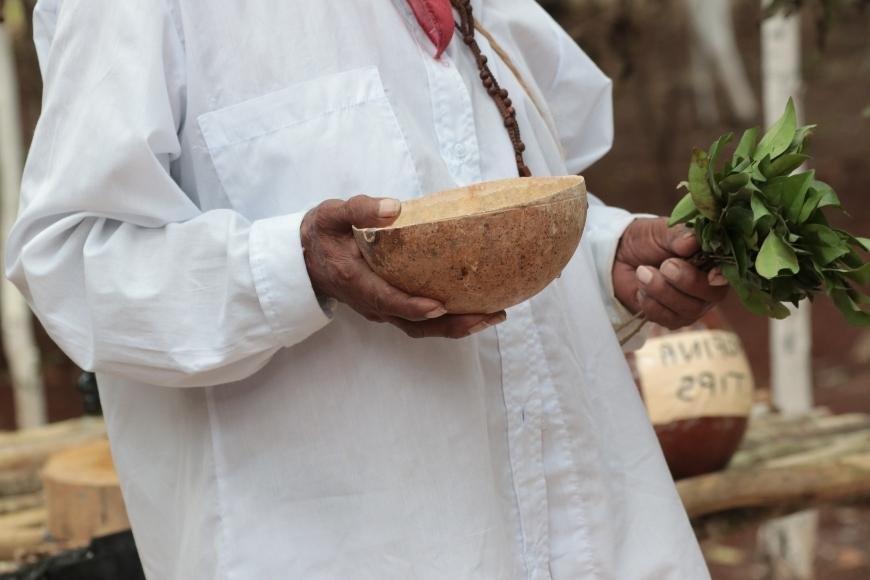What is Prickly Poppy?

What is Prickly Poppy? This age-old flower, from the poppy family, has been employed for many years in different cultures. As you delve into this article, you'll uncover the rich history and traditional uses of prickly poppy.
We'll investigate the results of consuming prickly poppy, as well as any possible adverse reactions to be aware of. You'll also learn about the safety concerns surrounding prickly poppy use and whether or not it's considered legal in different parts of the world.
At the conclusion of this article, you'll be equipped with a comprehensive understanding of prickly poppy and its place in contemporary society.
Table of Contents:
- What is Prickly Poppy?
- History of Prickly Poppy Use
- Effects of Prickly Poppy Use
- Side Effects of Prickly Poppy Use
- Is Prickly Poppy Safe?
- Legality of Prickly Poppy
- Summary of Prickly Poppy
- Frequently Asked Questions What is Prickly Poppy?
- Conclusion
1. What is Prickly Poppy?
The prickly poppy, belonging to the poppy family, is a fascinating plant with a rich history and intriguing effects. Known scientifically as Argemone mexicana, this perennial herbaceous plant boasts beautiful yellow or white flowers surrounded by prickly leaves and stems.
Native to Mexico, the prickly poppy can be found in many places throughout North America's southwest. They thrive in arid environments like deserts and rocky terrains. Despite their delicate appearance, these plants possess remarkable hardiness and resilience.
In addition to their striking appearance, prickly poppies have been used for centuries for their medicinal properties and psychoactive effects. To better understand this captivating plant, let's dive into its historical use and what makes it so alluring to those interested in exploring alternative substances.
2. History of Prickly Poppy Use

The use of prickly poppy, a member of the poppy family, can be traced back to ancient civilizations across various cultures. The impressive look of this poppy family member, with its large white or yellow blossoms and thorny foliage, made it a desirable plant for both decorative and healing applications.
Ancient Mesoamerican Cultures
In ancient Mesoamerica, prickly poppies were employed both topically and orally to treat a range of ailments. The sap from the plant was applied topically to treat skin conditions such as warts and boils. Additionally, it was believed that consuming parts of the plant could help alleviate pain and induce sleep due to its sedative properties.
North American Native Tribes
Native tribes in North America also recognized the potential benefits of prickly poppies. They utilized different parts of the plant for their therapeutic effects - seeds were ground into a paste to relieve toothaches while roots were boiled into teas for treating stomach issues and respiratory problems.
- Paiute Tribe: The Paiute tribe found uses for prickly poppies in rituals related to rainmaking ceremonies by burning dried plants during prayers.
- Kiowa Tribe: Members of Kiowa tribe crushed prickly poppy seeds mixed with buffalo fat which they then applied onto their bodies before engaging in warfare or hunting expeditions; believing that doing so would provide protection against injury.
Modern Usage
In recent years, prickly poppy has gained popularity among recreational users for its mild psychoactive effects. Some individuals claim that consuming the plant can induce a sense of relaxation and euphoria, although scientific research on these claims is limited. It's essential to note that while some species within the poppy family are known for their potent alkaloids (such as opium poppies), the chemical composition of prickly poppies differs significantly.
The historical use of prickly poppy across various cultures highlights its potential therapeutic benefits and cultural significance. However, it's crucial to approach this plant with caution due to limited scientific research supporting its safety and efficacy in modern usage.
3. Effects of Prickly Poppy Use
The effects of prickly poppy, a member of the poppy family, can vary depending on factors such as dosage and individual sensitivity. While not as potent as other well-known members like opium poppies, it still possesses some interesting properties that have been utilized for centuries in traditional medicine and spiritual practices.
A. Psychoactive Properties
Prickly poppy contains several alkaloids, including protopine and allocryptopine, which are known to possess psychoactive properties. The alkaloids present in prickly poppy, such as protopine and allocryptopine, are thought to be the cause of a tranquilizing and pleasurable sensation when ingested or smoked.
Ingesting prickly poppy may lead to feelings of relaxation, drowsiness, and even mild hallucinations in higher doses. Some users report experiencing vivid dreams after consuming this plant before bedtime. However, it is important to note that these effects can vary greatly between individuals based on their personal tolerance levels.
B. Medicinal Uses
Historically, various parts of the prickly poppy plant have been used by indigenous cultures for medicinal purposes due to its analgesic (pain-relieving) properties[1]. It has been applied topically in the form of poultices or ointments made from crushed leaves or seeds to alleviate pain from skin conditions like burns or insect bites.
- Pain relief: The analgesic properties of prickly poppy have been used to treat mild to moderate pain, such as headaches or toothaches.
- Anti-inflammatory: Prickly poppy has also been utilized for its anti-inflammatory effects, which can help reduce swelling and redness in cases of skin irritation or injury.
- Sedative: The sedative effects of prickly poppy make it a popular choice for treating insomnia and promoting relaxation. However, these effects are generally milder than those produced by other members of the poppy family like opium.
In addition to these traditional uses, modern research is beginning to explore the potential therapeutic applications of prickly poppy's alkaloids in areas such as neuroprotection. Further research is necessary to make any conclusive statements regarding its potential effectiveness in this area.
4. Side Effects of Prickly Poppy Use
The use of prickly poppy, like any other substance, may come with some side effects that users should be aware of before indulging in this plant from the poppy family. While it is generally considered safe for most people when used responsibly and in moderation, there are a few potential side effects to consider.
Potential Physical Side Effects
- Drowsiness: One common effect reported by users is drowsiness or sedation. This can make operating heavy machinery or driving dangerous while under the influence of prickly poppy.
- Nausea and vomiting: Some individuals might experience nausea and vomiting after consuming prickly poppy. It's advised to commence with a low amount and gradually boost as needed, in order to minimize any possible nausea or vomiting.
- Dizziness: Dizziness has been reported by some users after using prickly poppy. It's essential to avoid activities that require coordination or balance until you know how this plant affects you personally.
Potential Psychological Side Effects
- Anxiety: Although many people find the effects of prickly poppy calming, others may experience increased anxiety levels due to its psychoactive properties. If you have a history of anxiety disorders or are prone to panic attacks, it is advisable to take extra caution when trying this plant for the first time.
- Hallucinations: In higher doses, some individuals have reported experiencing mild hallucinations while using prickly poppies (source). In certain cases, these effects may be disconcerting for some people, yet they are typically fleeting and not hazardous.
- Dependence: Although prickly poppy is not considered to be highly addictive, it's still possible to develop a psychological dependence on its effects. As with any substance, moderation and responsible use are key to avoiding potential issues related to dependency.
In addition to the side effects mentioned above, individuals with pre-existing medical conditions or those taking medications should consult their healthcare provider before using prickly poppy. This plant may interact negatively with certain medications or exacerbate existing health problems.
5. Is Prickly Poppy Safe?
When it comes to the safety of using prickly poppy for recreational purposes, there are a few factors to consider. While this plant has been used historically in various cultures, its effects and potential risks should be taken into account before deciding to experiment with it.
Addiction Potential
Although not as addictive as other members of the poppy family, such as opium poppies that contain morphine and codeine, prickly poppies do possess some habit-forming properties due to their psychoactive alkaloids like argemone mexicana oil (AMO). However, research on addiction potential remains limited.
Toxicity Concerns
- Berberine: One of the primary active compounds found in some species of prickly poppies is berberine which can cause gastrointestinal distress if consumed in large quantities.
- Sanguinarine: Another compound present in certain species is sanguinarine which has toxic properties at high doses and can lead to symptoms such as nausea, vomiting, diarrhea and abdominal pain.
- Allergic Reactions: People who are allergic or sensitive to plants from the Papaveraceae family may also experience an allergic reaction when using prickly poppy.
Interactions with Other Substances
Prickly poppy may interact with other substances, including medications and recreational drugs. It is important to be aware of any potential interactions and seek advice from a healthcare professional before experimenting with this plant if taking medications or having existing health conditions.
In conclusion, while prickly poppy has been used historically for various purposes, its safety profile remains relatively unknown due to limited research. As such, it is essential to approach its use cautiously and responsibly. Advise caution when taking prickly poppy; begin with small amounts, be aware of how your body reacts and consider the potential dangers and interactions.
6. Legality of Prickly Poppy

The legal status of prickly poppy varies across different countries and regions around the world. It is essential to be aware of these regulations before cultivating, possessing, or consuming this plant.
United States
In the United States, prickly poppy is not a controlled substance under federal law. However, some states have specific regulations regarding its cultivation and use. For example, in California, it is illegal to grow any species from the poppy family, including prickly poppies.
Canada
In Canada, the Controlled Drugs and Substances Act (CDSA) regulates plants containing opium alkaloids such as morphine and codeine; however, prickly poppies are not considered controlled substances since they contain only trace amounts of these substances - if any. Since prickly poppies contain only trace amounts of these substances - if at all - they are not considered controlled substances in Canada.
Australia
Australian laws prohibit growing any plant from which opiates can be extracted without proper licensing. While there's no explicit mention of prickly poppies, it would be wise to consult local authorities before attempting to cultivate them in Australia.
New Zealand
- Papaver somniferum: The opium-producing variety is strictly regulated under New Zealand's Misuse of Drugs Act 1975 as a Class B1 drug; however,
- Papaver rhoeas: Also known as corn/poppy or Flanders field poppy, is not regulated under New Zealand law.
It's critical to remember that rules may alter with time and could be different depending on the specific type of prickly poppy. Always consult local laws before cultivating or consuming any plant with psychoactive properties.
The legality of prickly poppy is a complex issue that varies from country to country. It is critical to comprehend the summation of prickly poppy and its consequences before determining if it should be taken in, bearing in mind the intricacy of its legality across different countries.
7. Summary of Prickly Poppy
The prickly poppy, a fascinating plant with a rich history and unique effects, has been used for various purposes throughout time. From its historical use in traditional medicine to its current recreational exploration by young adults, this intriguing plant continues to captivate those who encounter it.
Key takeaways about the prickly poppy include:
- This plant possesses captivating blooms and spines that adorn the stem and foliage.
- Historically, different cultures have utilized prickly poppy for medicinal purposes such as pain relief and treating skin conditions.
- The effects of using prickly poppy can range from mild relaxation to more intense experiences like euphoria or vivid dreams.
- Although side effects such as dizziness, nausea, or an upset stomach are rare when consumed responsibly, caution should still be taken while experimenting with any new substance.
- Prickly poppy's safety profile is relatively positive when compared to other psychoactive substances; nevertheless, caution should be exercised while experimenting with any new substance.
Frequently Asked Questions What is Prickly Poppy?
What does the prickly poppy symbolize?
The prickly poppy symbolizes resilience and strength due to its ability to thrive in harsh environments. It also represents protection, as the plant's spiny stems deter predators. In some cultures, it is associated with sleep and dreams because of its sedative properties.
What are the medicinal benefits of prickly poppy?
Prickly poppy has been used traditionally for its analgesic, anti-inflammatory, and sedative effects. It may help alleviate pain, reduce inflammation, and promote relaxation or sleep. However, more research is needed to confirm these potential benefits. Always consult a healthcare professional before using any herbal remedy.
What type of plant is prickly poppy?
Prickly poppy (Argemone spp.) belongs to the Papaveraceae family of flowering plants which includes opium-poppy (Papaver somniferum). They are characterized by their bright yellow or white flowers with spiny leaves and stems that can grow up to 5 feet tall.
Is prickly poppy toxic?
Ingesting large amounts of Prickly Poppy can be toxic due to alkaloids such as sanguinarine present in the plant. These compounds have potentially harmful effects on humans when consumed excessively or improperly prepared. Therefore caution should be exercised while handling this plant.
Conclusion
In conclusion, prickly poppy is an interesting plant with a long history of use in traditional medicine and spiritual practices. The intensity of the effects can vary from a calming sensation to extreme hallucinations, depending on how much is taken. While it appears safe for recreational use when taken responsibly, there are potential side effects that should be monitored closely and it is important to know the legal status before attempting to obtain or consume this plant. With careful consideration of these factors, prickly poppy may offer some unique benefits as part of a holistic health regimen.




































































































































